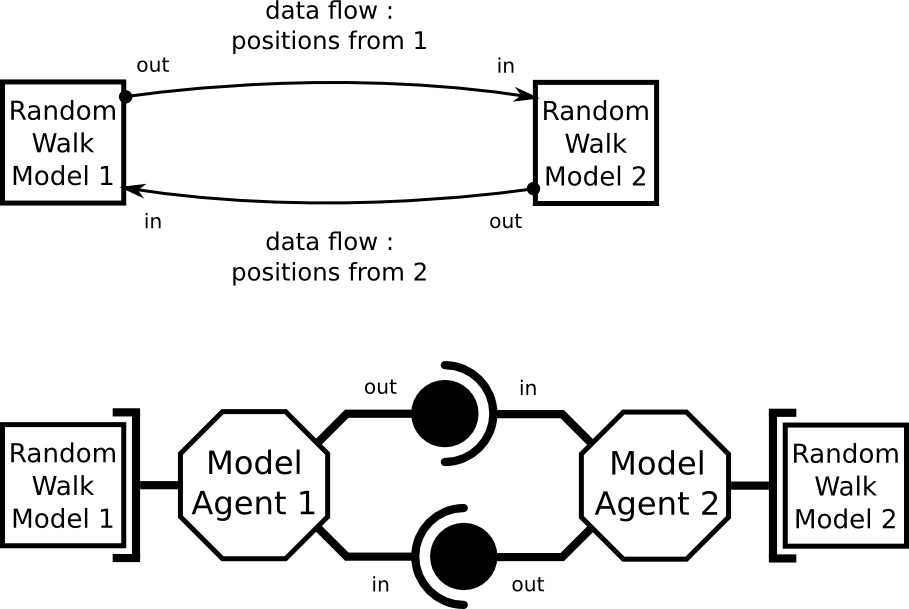The Netlogo models specifications available here and here. The exchanged data will be here the walkers positions (x,y) and the walker ID. The output port of one model is linked to the input of the other.


public class OperationFilterLeftSide implements Operation {
/**
* X boundary (e.g. when a turtle cross the vertical line at
* xCor_verticalLimitLeft, it is removed from the model
*/
private int xCor_verticalLimitLeft;
/**
* The id of the model
*/
private int modelId;
public OperationFilterLeftSide(int xCor, int myModelId) {
this.xCor_verticalLimitLeft = xCor;
this.modelId = myModelId;
}
public SimulData apply(SimulData someKindOfData) {
FilteredTurtles res = new FilteredTurtles();
ArrayList<Walker> turtlesToRemove = new ArrayList<Walker>();
// check the class type
if (someKindOfData.getClass().equals(ExchangedTurtles1.class) ||
someKindOfData.getClass().equals(ExchangedTurtles2.class)) {
// get the initial list of positions
ET eT = (ET) someKindOfData;
ArrayList<Walker> walkers = eT.getTurtle();
// we are looking at the turtle to keep and those to remove from
// the model
for (Walker tortuga : walkers) {
if (tortuga.getXPos() < xCor_verticalLimitLeft) {
// delete this turtle
turtlesToRemove.add(tortuga);
}
}
} else {
System.err
.println("Trying to apply an operation on the wrong type of class");
System.exit(666);
}
res.setFilteredTurtleList(turtlesToRemove);
return res;
}
public int getModelId() {
return modelId;
}
}